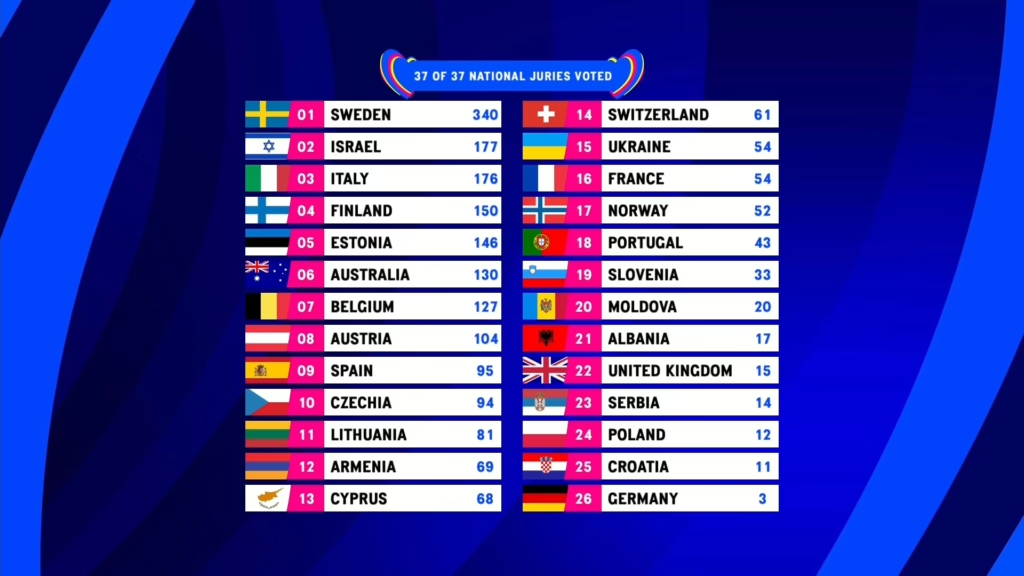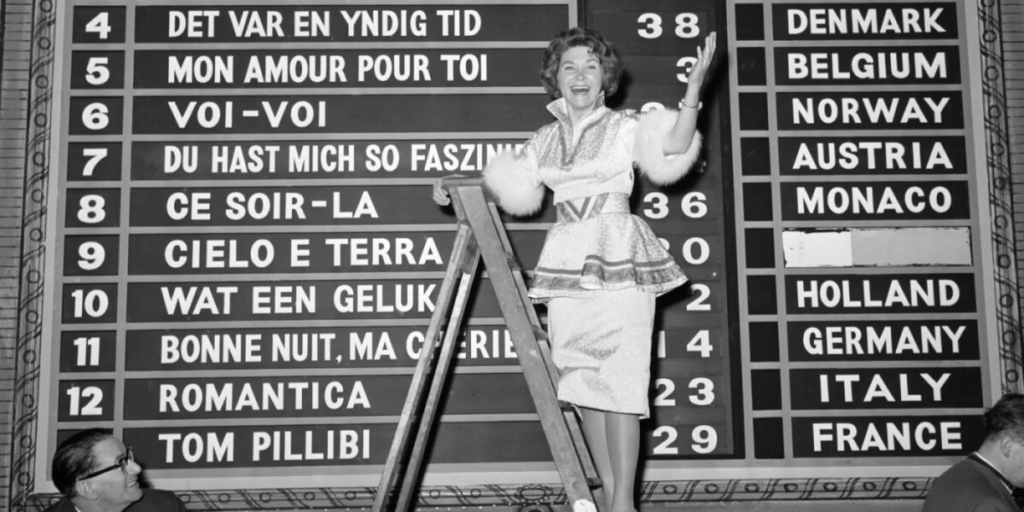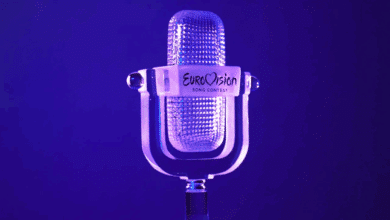It's a sometimes obscure subject: but how are the points awarded at Eurovision, and who awards them? Between the jury vote and the public vote, we wanted to decipher the Eurovision 2025 voting system for you, just a few days before the Final, which will take place next week live from Basel, on 13 and 15 May for the Semi-Finals and on 17 May for the Final.

The evolution of the Eurovision voting system since 1956
The Eurovision voting system has undergone many changes since 1956. And the famous "12 points »" have not always existed. They were introduced in 1975. Before that, the jury awarded 1 point per song, then 1, 2 and 3 points to its two favourite songs, and then again between 1 and 5 points to each song.
The year was 1975. At the time, there were 11 jurors per country, and each could award between 1 and 5 points per song. All these points were then added up according to the ranking of the songs, and the 1, 2, 3, 4, 5, 6, 7, 8, 10 and 12 points were awarded to the top ten songs. It was at this time that the results were announced orally, that the contest began to grow in length, and that the famous "12 » points" became a key element of Eurovision's identity.
In 1994, technology enabled viewers to see the spokespersons of each country give their points (in ascending order, from 1 to 12), but televoting did not arrive at Eurovision until 1997. First experimented with a few countries (Germany,Austria, United Kingdom, Sweden and Switzerland), it was generalised the following year. The system then switched to a 100% public vote for the final, with the jury (made up of 5 jurors per country) only being consulted in the event of a technical problem with the televoting system.
In 2008, in response to the growing number of participants and criticism of the results of the previous two years, the EBU changed the Eurovision voting system for the Semi-Finals: the nine highest-ranked songs in the televote qualify directly, while a jury chooses a tenth song from among the non-qualifiers. A sort of "second chance ». In 2009, the combined vote (50 % public, 50% five-member professional jury) was reintroduced in the final. Each country establishes two rankings, which are then averaged to determine the final points, with priority given to televoting in the event of a tie.
Recent developments in the Eurovision voting system
The current Eurovision voting system was introduced in 2016, with a televote from the public and a vote from the jury each counting for 50% of the points (and no longer combined and averaged votes). In the Semi-Finals, the top 10 songs with the most points advance to the Final.
Since 2023, viewers around the world have been able to vote in Eurovision via the official website or app. These votes are aggregated and count in the same way as a country.
Since 2024, the Semi-Finals have been based entirely on a televote of 100% from the public, while the Final has retained the classic distribution: 50 % from points awarded by the professional juries and 50 % from the viewers' vote. And we're beginning to see some of the perverse effects of this system, with songs entering Eurovision calibrated to get through to the semi-finals, without any real vocal or artistic depth.
Who are the professional Eurovision juries and how do they vote?
Each country must assemble a national jury made up of 5 people appointed by the national broadcaster. They must be professionals from the music industry and have the nationality of the country they represent: composers, producers, artistic directors, etc. For France in 2024, for example, we had Valérie Dissaux (Director of Communications, Culture, Games and Entertainment at France Télévisions), Pierre Suppa (Casting Director) and Fanny Llado (singing and vocal technique trainer).
To avoid any attempt at corruption, the names of the jurors are generally not published before the competition. Complete list for Eurovision 2024. Obviously, they cannot vote for their own country.
The votes of each juror are then aggregated to give a score of 1, 2, 3, 4, 5, 6, 7, 8, 10 and 12 to the top 10 countries.
The jurors assess the performances on four criteria: overall impression of the performance, composition and originality, vocal ability of the artist, performance and staging. Certain international contexts could influence the votes, and last year in 2024, the jurors were given a kind of awareness-raising session on independence, impartiality and the scoring criteria before the voting session.
The jury's votes are collected during the » Jury Show, which is a dress rehearsal of the entire show under live conditions, the day before the live show.

How are televoting points awarded?
It is up to each national broadcaster to allow their viewers to take part in the vote. Of course " you cannot vote for your own country" . Voting takes place by SMS, via the official Eurovision mobile application...
The results of the viewers' votes are then converted into a ranking of all the songs presented, with the top ten songs receiving, in ascending order of preference: 1, 2, 3, 4, 5, 6, 7, 8, 10 and 12 points.
And what would happen if a major unforeseen event prevented the televoting from running smoothly? The jury's results would be used instead.
The special case of televoting in San Marino
The micro-State of San Marino only uses a jury vote in the semi-finals, as the country does not have televoting. In the final, the televoting is simulated by an algorithm.
What happens in the event of a tie for first place?
Until 2022, in the event of a tie at the top of the Eurovision ranking during the Final, the song that has received points from the greatest number of different countries will win. If there is still a tie, the number of "12 » points received by each song is counted. Then "10 » points, then 8 points, and so on until the tie is broken. If there is still a tie, the song performed first in the final is declared the winner.
From 2023 onwards, the song that comes top of the national votes or the "rest of the world »" vote will be declared the winner.
What is the maximum score a country could achieve at Eurovision?
The maximum score that a country can obtain at Eurovision is the total points it could receive from the jury and the televote of all the other countries, assuming that it comes first everywhere. The theoretical formula is :
(total number of countries - 1) × 12
for the jury vote, the 12 points representing the maximum attributable per vote, the "-1 » because "you cannot vote for your own country ». But for televoting it's different. Although the rule applies, there is an additional virtual country comprising the "rest of the world »" vote. So 37 countries in total.
In 2025, with 37 participating countries and the "rest of the world »" vote gives : (37 - 1) × 12 + (37 * 12) = 876.
In theory, therefore, a country could obtain a maximum of 876 points at Eurovision 2025 if it received the 12 points from the jury and the televote from each of the 36 other countries AND the "rest of the world »" vote.
To find out more...
Record number of points
The record for the number of points obtained is held by the Portugal in 2017 with 758 points






